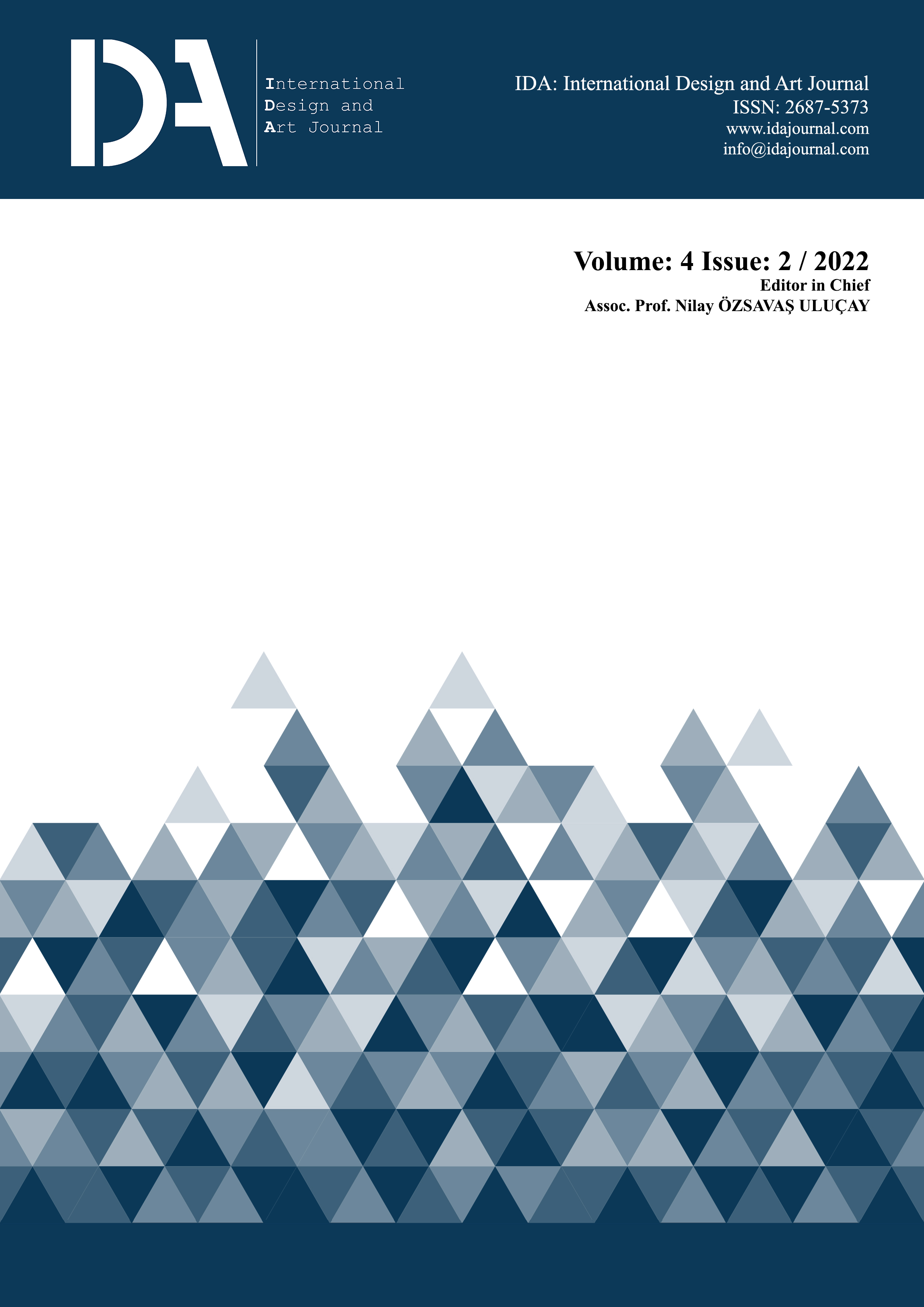Biophilic architecture and water: Examining water as a spatial sensory element
Anahtar Kelimeler:
Biophilic Architecture- Architectural Space- Water- Perception- SensesÖzet
Biophilic design can be briefly summarized as a concept affecting human well-being and nature. Thus, the inclusion of water in architectural designs has attracted attention. The purpose of this study is to evaluate the sensory perception of water in architectural space designs that can be revealed as examples of biophilic design. Scope of this study, seven contemporary architectural examples were examined within the context of the importance of perceptual aspects of water. This study is a qualitative research design. Data collection methods from documents are used. Two methods are designed for this study. The first method’s aim was to analyze to describe the sensory features of water and the second method’s aim was to analyze to determine the sensory and perceptual concepts of water in selected buildings. As a result, the concepts that emerged from the analyses affect the relationship between biophilic design, and architecture. The results provide 21 concepts (Noise, Endless, Calm, Curling, Plane, Disappearing, Multisensory, Kaleidoscopic Effect, Infinitely Reflections, Senses, Contact, Eco, Hearing, Part of Waterfall, Illusion, View, Peaceful, Reflection, Dramatic Panorama, Communication, Reflection) from statements describing the relationship between water, human, nature, biophilic design and architecture for the designers.
Referanslar
Abdalrahman, Z., & Galbrun, L. (2020). Audio-visual preferences, perception, and use of water features in open-plan offices. The Journal of the Acoustical Society of America, 147(3), Article 1661. https://doi.org/10.1121/10.0000892
Adevi, A. A., Uvnäs-Moberg, K., & Grahn, P. (2018). Therapeutic interventions in a rehabilitation garden may induce temporary extrovert and/or introvert behavioural changes in patients, suffering from stress-related disorders. Urban Forestry & Urban Greening, 30, 182-193. https://doi.org/10.1016/j.ufug.2018.02.010
Bilgin, İ. (2019). Mimarın soluğu Peter Zumthor mimarlığı üzerine denemeler. Metis Yayınları.
Browning, W. D., Ryan, C. O., & Clancy, J. O. (2014). 14 patterns of biophilic design-improving health & well-being in the built environment. Terrapin Bright Green LLC.
Cacique, M. & Ou, S-J. (2022). Biophilic design as a strategy for accomplishing the idea of healthy, sustainable, and resilient environments. Sustainability, 14(9), 5605. https://doi.org/10.3390/su14095605.
Dabbagh, S. (2018). The role of water features reducing anxiety in interior spaces public waiting spaces in healthcare buildings as a case study. Muthanna Journal of Engineering and Technology (MJET), 4(2), 66-74. https://doi.org/10.18081/mjet/2016-4/66-74
Frampton, K. (1991). Tadao Ando. The Museum of Modern Art Archive: Distributed by H.N. Abrams.
Fromm, E. (1973). The Anatomy of Human Destructiveness. Holt, Rinehart and Winston.
Foster and Partners. (n.d.). Apple Piazza Liberty. https://www.fosterandpartners.com/projects/apple-piazza-liberty/ (22.04.2022).
Güzer, C. A. (2000). Modernizm’in son savaşçısı, Tadao Ando. In M. Ekincioğlu (Ed.), Çağdaş Dünya Mimarları 6-Tadao Ando (35-47). Boyut Yayın Grubu.
Hartig, T., & Staats, H. (2006). The need for psychological restoration as a determinant of environmental preferences. Journal of Environmental Psychology, 26(3), 215-226. https://doi.org/10.1016/j.jenvp.2006.07.007
Hongisto, V., Varjo, J., Oliva, D., Haapakangas, A., & Benway E. (2017). Perception of water-based masking sounds-long-term experiment in an open-plan office. Frontiers in Psychology, 8, Article 1177. https://doi.org/10.3389/fpsyg.2017.01177
Jiang, C. (2019). Museum design as a tool for a city [Unpublished Master Thesis, University of Massachusetts Amherst, USA]. https://doi.org/10.7275/14825359
Joye, Y. (2006). An interdisciplinary argument for natural morphologies in architectural design. Environment and Planning B: Planning and Design, 33(2), 239-252. https://doi.org/10.1068/b31194
Joye, Y. (2007). Architectural lessons from environmental psychology: The case of biophilic architecture. Review of General Psychology, 11(4), 305-328. https://doi.org/10.1037/1089-2680.11.4.305
Kaplan, R., & Kaplan, S. (1989). The experience of nature. Cambridge University Press.
Kellert, S. R. (2005). Building for life: Designing and understanding the human-nature connection. Island Press.
Kellert, S. R. & Calabrese, E. (2015). The practice of biophilic design. www.biophilic-design.com (22.04.2022).
Kellert, S. R., Heerwagen, J., & Mador, P. (2008). Biophilic Design. The Theory, Science, and Practice of Bringing Buildings to Life. John Wiley and Sons.
Kellert, S. R., & Wilson, E. O. (1993). The Biophilia Hypothesis. Island Press.
Kera. (2014, October 17). Water garden [Video]. YouTube. https://www.youtube.com/watch?v=PzAXMkwstzo&t=361s
Manufacturing Intellect. (2019, September 17). A conversation with Frank Lloyd Wright (1953) [Video]. YouTube. https://www.youtube.com/watch?v=W8EABJrMplY
Merriam, S. B. (2018). Nitel araştırma: Desen ve uygulama için bir rehber. Nobel Akademik. Yayıncılık.
Omran, W. M. (2016). Biomimicry applications in agriculture to benefit from water renewable resources. International Journal of Science and Research (IJSR), 5(2), 333-336.
Ouroussoff, N. (2007a, November 19). A delicate glass roof with links to the past. The New York Times. https://www.nytimes.com/2007/11/19/arts/design/19fost.html (17.03.2021).
Ouroussoff, N. (2007b, November 20). Norman Foster's courtyard atrium: A glass canopy connecting history. The New York Times. https://www.nytimes.com/2007/11/19/arts/19iht-arch.1.8388840.html (17.03.2021).
Pálsdóttir, A.M., Spendrup, S., Mårtensson, L., & Wendin, K. (2021). Garden smellscape–experiences of plant scents in a nature-based intervention. Frontiers in Psychology, 12, Article 667957. https://doi.org/10.3389/fpsyg.2021.667957
Poulsen, D.V., Pálsdóttir, A.M., Christensen, S.I., Wilson, L., & Uldall, S.W. (2020). Therapeutic nature activities: A step towards the labour market for traumatized refugees. International Journal of Environmental Research and Public Health, 17(20), Article 7542. https://doi.org/10.3390/ijerph17207542
Richardson, M. & Butler, C. W. (2022) Nature connectedness and biophilic design. Building Research & Information, 50(1-2), 36-42. https://doi.org/10.1080/09613218.2021.2006594
Spence, C. (2020a). Using ambient scent to enhance well-being in the multisensory built environment. Frontiers in Psychology, 11, Article 598859. https://doi.org/10.3389/fpsyg.2020.598859
Spence, C. (2020b). Senses of place: Architectural design for the multisensory mind. Cognitive Research: Principles and Implications, 5, Article 46. https://doi.org/10.1186/s41235-020-00243-4
White, M.P., Smith, A.T., Humphryes, K., Pahl, S., Snelling, D., & Depledge, M. (2010). Blue space: The importance of water for preference, affect, and restorativeness ratings of natural and built scenes. Journal of Environmental Psychology, 30(4), 482-493. https://doi.org/10.1016/j.jenvp.2010.04.004
Wiebe, C. (n.d.). Frank Lloyd Wright, Fallingwater. Khan Academy. https://www.khanacademy.org/humanities/ap-art-history/later-europe-and-americas/modernity-ap/a/frank-lloyd-wright-fallingwater (17.03.2021).
Wilson, E. O. (1986). Biophilia. Harvard University Press.
İndir
Yayınlanmış
Sayı
Bölüm
Lisans
Telif Hakkı (c) 2022 IDA: International Design and Art Journal

Bu çalışma Creative Commons Attribution-NonCommercial-ShareAlike 4.0 International License ile lisanslanmıtır.
IDA: International Design and Art Journal açık erişimli akademik bir dergidir. Kabul edilen makalelerin tüm yayın hakları IDA: International Design and Art Journal'a devredilmiş sayılır. Makaleler başka bir yerde yayınlanamaz, kopyalanamaz ve referans göstermeden kullanılamaz.

IDA: International Design and Art Journal Creative Commons Atıf-GayriTicari-AynıLisanslaPaylaş 4.0 Uluslararası Lisansı ile lisanslanmıştır.


